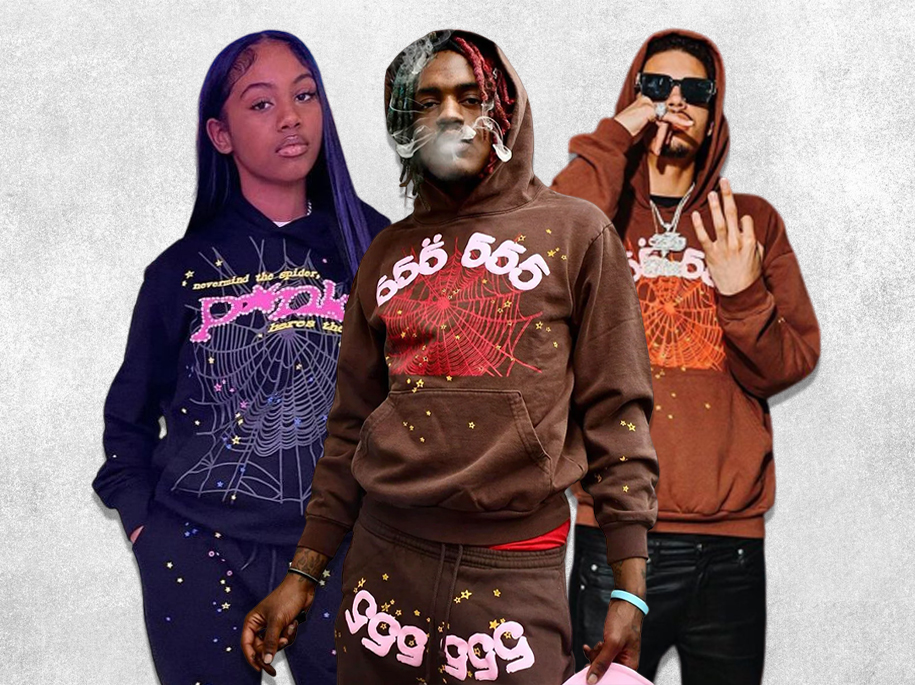What Sets Slow Fashion Apart?
In the realm of fashion, where trends often reign supreme, a new movement has been steadily gaining momentum: slow fashion. Contrary to its fast-paced counterpart, which prioritizes quick turnover and mass production, slow fashion champions a more deliberate, ethical, and sustainable approach to clothing manufacturing and consumption. Visit now Sp5der hoodie At the heart of this movement lies a profound commitment to environmental sustainability.
Slow fashion is not merely a passing trend; it represents a fundamental shift in the way we perceive and engage with clothing. At its core, slow fashion emphasizes quality over quantity, craftsmanship over mass production, and longevity over disposability. Unlike fast fashion brands that churn out endless collections at breakneck speed, slow fashion labels prioritize timeless designs, durable materials, and ethical production practices.
The Pillars of Slow Fashion
Slow fashion is built upon several key principles, with environmental sustainability occupying a central position. These principles include:
1. Ethical Production
Slow fashion brands prioritize transparency and fair labor practices throughout their supply chains. By partnering with local artisans or investing in ethical manufacturing processes, these brands ensure that their garments are made under humane working conditions.
2. Minimal Waste
One of the hallmarks of slow fashion is its commitment to minimizing waste at every stage of the production process. This involves using sustainable materials, repurposing fabric scraps, and implementing efficient recycling programs to reduce environmental impact.
3. Quality Over Quantity
In stark contrast to the disposable nature of fast fashion, slow fashion promotes the concept of buying fewer, higher-quality garments that are built to last. By investing in timeless pieces crafted from durable materials, consumers can minimize their overall environmental footprint and contribute to a more sustainable fashion industry.
4. Conscious Consumption
Central to the ethos of slow fashion is the idea of mindful consumption. Instead of succumbing to impulse purchases driven by fleeting trends, slow fashion encourages consumers to thoughtfully consider their clothing choices, opting for items that align with their values and personal style.
Environmental Sustainability in Slow Fashion
Reducing Environmental Impact
At its core, slow fashion is intrinsically linked to environmental sustainability. By prioritizing eco-friendly materials, minimizing waste, and embracing ethical production practices, slow fashion brands strive to reduce their environmental footprint and mitigate the harmful effects of traditional garment manufacturing.
Sustainable Materials
One of the most significant ways in which slow fashion promotes environmental sustainability is through the use of sustainable materials. From organic cotton and hemp to recycled polyester and TENCEL™️, slow fashion brands prioritize fabrics that have minimal impact on the planet.
Eco-Friendly Production Practices
In addition to using sustainable materials, slow fashion brands also prioritize eco-friendly production practices. This includes employing low-impact dyeing methods, minimizing water usage, and reducing energy consumption to lower their carbon footprint.
Circular Economy Initiatives
Many slow fashion brands are embracing the principles of the circular economy, which aims to minimize waste and maximize resource efficiency. By implementing take-back programs, upcycling old garments, and designing products with end-of-life recycling in mind, these brands are paving the way for a more sustainable fashion industry.
Raising Awareness
Beyond its tangible efforts to reduce environmental impact, slow fashion also plays a crucial role in raising awareness about the environmental and social issues inherent in the fashion industry. By shining a spotlight on issues such as garment waste, pollution, and unethical labor practices, slow fashion encourages consumers to rethink their purchasing habits and demand greater accountability from brands.
The Future of Slow Fashion
As concerns about climate change and environmental degradation continue to mount, the importance of slow fashion in promoting sustainability cannot be overstated. By championing ethical production practices, Check it now https://spiderofficial.us/sp5der-hoodie/ minimizing waste, and prioritizing quality over quantity, slow fashion offers a compelling alternative to the status quo.
Embracing Change
While the transition to a more sustainable fashion industry may require significant effort and investment, the benefits far outweigh the challenges. By embracing the principles of slow fashion and prioritizing environmental sustainability, brands have the opportunity to not only reduce their ecological footprint but also appeal to a growing segment of conscious consumers who demand transparency, accountability, and ethical integrity.
Empowering Consumers
Ultimately, the power to drive change lies in the hands of consumers. By making informed choices and supporting brands that align with their values, individuals can play a pivotal role in shaping the future of fashion. Whether it’s opting for ethically made garments, participating in clothing swaps, or advocating for greater transparency within the industry, every action counts in the journey towards a more sustainable and equitable fashion ecosystem.
Conclusion
Environmental sustainability serves as a cornerstone of the slow fashion movement, guiding its principles, practices, and aspirations. By prioritizing ethical production, minimizing waste, and raising awareness about the environmental impact of clothing consumption, slow fashion offers a pathway towards a more sustainable future for the fashion industry and the planet as a whole.
